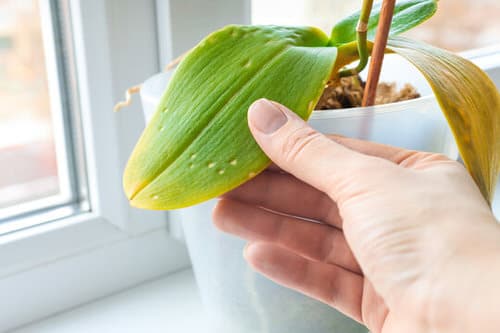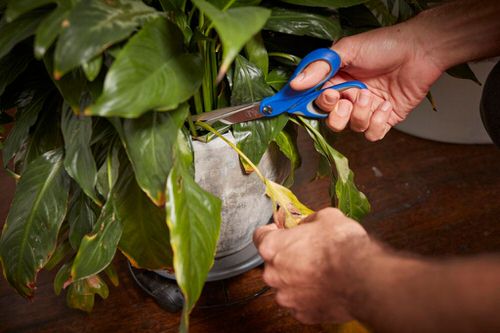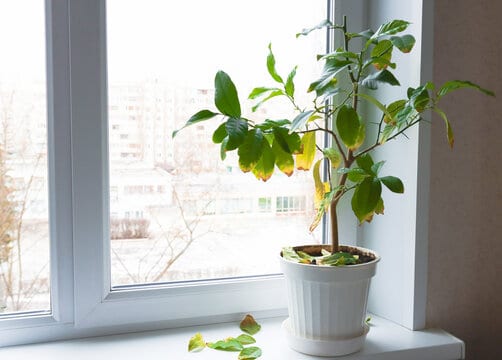Have a look at the Quick Checklist to Revive Your Dying Houseplants in the simple steps and keep them thriving for a long time to come!
Here’s a Quick Checklist to Revive The Dying Houseplants that will save you from many hassles in the long run to save your green friends!
Here are the top mistakes to avoid during re-potting houseplants
Quick Checklist to Revive Your Dying Houseplants
If your houseplants are not doing well or dying, you can perk them up again by following this checklist:
1. Turn the Soil and Refresh the Old Potting Media

Over time, the plant may get crowded with the binding of the growing medium and soil. Loosen up the soil, till, and gently separate the roots. Re-pot the plant into fresh soil or potting mix. You can also add organic matter to the soil.
If you see that the plant is getting crowded with overgrown roots, use a new pot that is one or two sizes bigger than the current pot.
2. Check the Foliage and Treat with Pesticide or Fungicide

Curled, damaged, discolored or folded leaves are the signs of pests and diseases. Treat with a quality pesticide or fungicide accordingly to curb these problems.
3. Avoid Overwatering

Overwatering is the most common reason that kills houseplants. If the plant is overwatered, it results in root rot and light green-yellow foliage.
Keep in mind that ‘watering regularly’ must be avoided for healthy roots and plants. Follow the simple rule of watering by allowing the topsoil to dry between watering. We have a great article on overwatering signs and saving an overwatered plant with all the information here.
4. Prune Dead Branches and Remove Damaged Leaves

You can revive a dying plant by removing the dead parts. It helps the plant to divert its energy back to keeping the healthy foliage growing. Prune the damaged leaves and cut off dry stems whenever you notice them on your plants.
5. Change the Position

Too much or little sun can also kill your plants. If you notice black or brown blotches on the foliage, then it is the result of exposure to the harsh afternoon sun. In such conditions, save your plants by trimming the affected leaves and relocating them.
However, if you see leaves are turning pale, yellow, or dropping off, then it reveals that the plants are not getting enough sunlight as bright indirect light is crucial for most plant varieties for optimum growth and photosynthesis.
6. Fertilize Timely

You can save malnourished plants (signs include – discolored foliage, slow or stunted growth) by feeding them balanced fertilizer. Refer to the label for the correct dosage. Avoid feeding the plants in winters, and keep in mind that overfertilization or using the wrong fertilizer can burn the roots.
A Tip: You can also use an organic fertilizer made from eggshells or use boiled vegetable water after cooling it down to room temperature.
7. Provide More Humidity

Too much dry air exposure may cause the foliage to turn brittle and crisp. Avoid keeping the plant near air conditioners, heaters, and radiators. Mist the leaves from time to time. You can also use a humidifier and group plants together with similar growing needs to create a microclimate.


